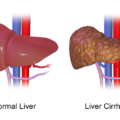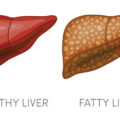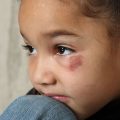Definition: An individual with at least one parent who is or was an alcoholic. Earlier discussions of the effects on the child of an alcoholic had focused on young or teenage children. In the 19805, being an adult child of an alcoholic (ACA or ACOA) became a self-identification associated with a mutual-help group movement, operating under the auspices of Al-Anon and in separate groups and treatment programmes, mostly organised on twelve-step group principles. A growing popular literature characterises the ACA as co-alcoholic or codependent and posits an inclusive list of debilitating characteristics of the ACA in adult life. There is a tendency now to generalise the model to “adult children of dysfunctional families”.
Alcoholism affects the entire family
Living with a non-recovering alcoholic in the family can contribute to stress for all members of the family. Each member may be affected differently. Not all alcoholic families experience or react to this stress in the same way. The level of dysfunction or resiliency of the non-alcoholic spouse is a key factor in the effects of problems impacting children.
Children raised in alcoholic families have different life experiences than children raised in non-alcoholic families. Children raised in other types of dysfunctional families may have similar developmental losses and stressors as children raised in alcoholic families. Children living with a non-recovering alcoholic score lower on measures of family cohesion, intellectual-cultural orientation, active-recreational orientation, and independence. They also usually experience higher levels of conflict within the family. Many children of alcoholics (COAs) experience other family members as distant and non-communicative. Children of alcoholics may be hampered by their inability to grow in developmentally healthy ways.
Many people report being exposed to alcoholism in their families.
Seventy-six million Americans, about 43% of the U.S. adult population, have been exposed to alcoholism in the family. Almost one in five adult Americans (18%) lived with an alcoholic while growing up.
Roughly one in eight American adult drinkers is an alcoholic or experiences problems due to the use of alcohol. The cost to society is estimated at in excess of $166 billion each year.
There are an estimated 26.8 million COAs in the United States. Preliminary research suggests that over 11 million are under the age of 18.
There is strong, scientific evidence that alcoholism tends to run in families. Children of alcoholics are more at risk for alcoholism and other drug abuse than children of non-alcoholics
Children of alcoholics are four times more likely than non-COAs to develop alcoholism.
Genetic factors play a major role in the development of alcoholism. There is an expanding base of literature that strongly supports a heritable basis for alcoholism and a range of family influences that may direct the development of children of alcoholics.
Children’s perceptions of parental drinking quantity and circumstances appear to influence their own drinking frequency.
Children’s alcohol expectancies reflect recognition of alcohol-related norms and cognizance of parental drinking patterns by a very early age.
Alcohol expectancies appear to be one of the mechanisms explaining the relationship between paternal alcoholism and heavy drinking among offspring during college.
Parental alcoholism and other drug dependencies have an impact on children’s early learning about alcohol and other drugs.
Family interaction patterns also may influence the COA’s risk for alcohol abuse. It has been found that families with an alcoholic parent displayed more negative family interaction during problem-solving discussions than in non-alcoholic families.
Almost one-third of any sample of alcoholics has at least one parent who also was or is an alcoholic.
Children of alcoholics are more likely than non-COAs to marry into families in which alcoholism is prevalent.
Parental alcoholism influences adolescent substance use through several different pathways including stress, negative affect, and decreased parental monitoring. Negative affect and impaired parental monitoring are associated with adolescents joining a peer network that supports drug use behavior.
After drinking alcohol, sons of alcoholics experience more of the physiological changes associated with pleasurable effects compared with sons of non-alcoholics, although only immediately after drinking.
Alcoholism usually has strong negative effects on marital relationships.
Separated and divorced men and women were three times as likely as married men and women to say they had been married to an alcoholic or problem drinker.
Almost two-thirds of separated and divorced women, and almost half of separated or divorced men, under age 46, have been exposed to alcoholism in the family at some time.
Alcohol is associated with a substantial proportion of human violence, and perpetrators are often under the influence of alcohol.
Alcohol is a key factor in 68% of manslaughters, 62% of assaults, 54% of murders and attempted murders, 48% of robberies, and 44% of burglaries.
Studies of family violence frequently document high rates of alcohol and other drug involvement.
COAs may be more likely to be the targets of physical abuse and to witness family violence.
Compared with non-alcoholic families, alcoholic families demonstrate poorer problem-solving abilities, both among the parents and within the family as a whole. These poor communications and problem-solving skills may be mechanisms through which lack of cohesion and increased conflict develop and escalate in alcoholic families.
COAs are more at risk for disruptive behavioral problems and are more likely than non-COAs to be sensation-seeking, aggressive, and impulsive.
Based on clinical observations and preliminary research, a relationship between parental alcoholism and child abuse is indicated in a large proportion of child abuse cases.
A significant number of children in this country are being raised by addicted parents. With more than one million children confirmed each year as victims of child abuse and neglect by state child protective service agencies, state welfare records have indicated that substance abuse is one of the top two problems exhibited by families in 81% of the reported cases.
Studies suggest an increased prevalence of alcoholism among parents who abuse children.
Existing research suggests alcoholism is more strongly related to child abuse than other disorders, such as parental depression.
Although several studies report very high rates of alcoholism among the parents of incest victims, much additional research is needed in this area.
Children of alcoholics exhibit symptoms of depression and anxiety more than children of non-alcoholics.
In general, COAs appear to have lower self-esteem than non-COAs in childhood, adolescence, and young adulthood.
Children of alcoholics exhibit elevated rates of psychopathology. Anxiety, depression, and externalizing behavior disorders are more common among COAs than among children of non-alcoholics.
Young COAs often show symptoms of depression and anxiety such as crying, bed wetting, not having friends, being afraid to go to school, or having nightmares. Older youth may stay in their rooms for long periods of time and not relate to other children claiming they “have no one to talk to.” Teens may show depressive symptoms by being perfectionistic in their endeavors, hoarding, staying by themselves, and being excessively self-conscious. Teenage COAs may begin to develop phobias.
Children of alcoholics experience greater physical and mental health problems and higher health care costs than children from non-alcoholic families.
Inpatient admission rates for substance abuse are triple that of other children.
Inpatient admission rates for mental disorders are almost double that of other children.
Injuries are more than one and one-half times greater than those of other children.
The rate of total health care costs for children of alcoholics is 32% greater than for children from non-alcoholic families.
Children of alcoholics score lower on tests measuring verbal ability.
COAs tend to score lower on tests that measure cognitive and verbal skills. Their ability to express themselves may be impaired, which can impede their school performance, peer relationships, ability to develop and sustain intimate relationships, and hamper performance in job interviews.
Low verbal scores, however, should not imply that COAs are intellectually impaired.
SEE: Does Alcohol Show Up in a Drug Test?
Children of alcoholics often have difficulties in school.
COAs often believe that they will be failures even if they do well academically. They often do not view themselves as successful. Children of alcoholics are more likely to be raised by parents with poorer cognitive abilities and in an environment lacking stimulation. A lack of stimulation in the rearing environment may account in part for the pattern of failure found in COAs compared with non-COAs.
Pre-school-aged COAs exhibited poorer language and reasoning skills than did non-COAs, and poorer performance among the COAs was predicted by the lower quality of stimulation present in the home.
COAs are more likely to be truant, drop out of school, repeat grades, or be referred to a school counselor, or psychologist. This may have little to do with academic ability; rather, COAs may have difficulty bonding with teachers, other students, and the school; they may experience anxiety related to performance, or they may be afraid of failure. The actual reasons have yet to be determined.
There is an increasing body of scientific evidence indicating that risk for later problems, and even alcoholic outcomes are detectable early in the life course and, in some instances, before school entry.
Children of alcoholics have greater difficulty with abstraction and conceptual reasoning.
Abstraction and conceptual reasoning play an important role in problem-solving, whether the problems are academic or are situations related to the problems of life. Therefore, children of alcoholics might require very concrete explanations and instructions.
Children of alcoholics may benefit from adult efforts that help them to:
- Develop autonomy and independence.
- Develop a strong social orientation and social skills.
- Engage in acts of “required helpfulness.”
- Develop a close bond with a caregiver.
- Cope successfully with emotionally hazardous experiences.
- Perceive their experiences constructively, even if those experiences cause pain or suffering, and gain, early in life, other people’s positive attention.
- Develop day-to-day coping strategies.
Children can be protected from many problems associated with growing up in an alcoholic family.
If healthy family rituals or traditions, such as vacations, mealtimes, or holidays, are highly valued and maintained, if the active alcoholic is confronted with his or her problem, if there are consistent significant others in the life of the child or children, and if there is moderate to high religious observance, children can be protected from many of the consequences of parental alcoholism.
Maternal alcohol consumption during any time of pregnancy can cause alcohol-related birth defects or alcohol-related neurological deficits.
The rate of drinking during pregnancy appears to be increasing. Prenatal alcohol effects have been detected at moderate levels of alcohol consumption by non-alcoholic women. Even though a mother is not an alcoholic, her child may not be spared the effects of prenatal alcohol exposure.
Cognitive performance is less affected by alcohol exposure in infants and children whose mothers stopped drinking in early pregnancy, despite the mothers’ resumption of alcohol use after giving birth.
One analysis of 6-year-olds, with demonstrated effects of second-trimester alcohol exposure, had lower academic achievement and problems with reading, spelling, and mathematical skills.
Approximately 6 percent of the offspring of alcoholic women have Fetal Alcohol Syndrome (FAS); the FAS risk for offspring born after a FAS sibling, is as high as 70 percent.
Those diagnosed as having Fetal Alcohol Syndrome had IQ scores ranging from 20-105 with a mean of 68. Subjects also demonstrated poor concentration and attention.
People with FAS demonstrate growth deficits, morphologic abnormalities, mental retardation, and behavioral difficulties. Secondary effects of FAS among adolescents and adults include mental health problems, disrupted schooling (dropping out or being suspended or expelled), trouble with the law, dependent living as an adult, and problems with employment. SEE: Alcohol-related Brain Damage






